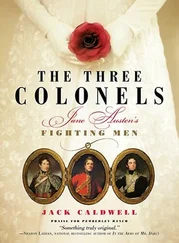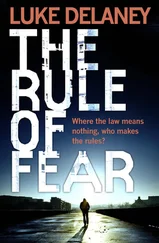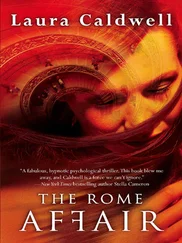Savonarola, of course, is Carnival's most vocal opponent. In his eyes, a challenge has risen against Christianity, leading the people of Florence into temptation. And he recognizes that there's one force, more powerful than the others, contributing to the city's corruption. It teaches men that pagan authorities can rival the Bible, that wisdom and beauty should be worshiped in unchristian things. It leads men to believe that human life is a quest for earthly knowledge and satisfaction, distracting them from the only object that matters: salvation. The force is humanism. And its greatest advocates are the leading intellectuals of the city, the humanists.
That's when Savonarola comes up with the idea that's probably his greatest legacy to history. He decides that on Shrove Tuesday, the culminating day of Carnival, he will stage a huge event-something that will show the progress and transformation of the city, but at the same time remind the Florentines of their sinfulness. He lets the gangs of young men roam the city, but now he gives them a purpose. He tells them to collect unchristian objects from every neighborhood and bring them back to the main square. He puts all of the objects in a huge pyramid. And on that day, Shrove Tuesday, when the street gangs would usually be sitting around fires and fighting each other with stones, Savonarola has them building another kind of fire. Paul looks at his map, then fixes his eyes on me.
The bonfire of the vanities, I say.
Right. The gangs returned with cart after cart. They came back with cards and dice. Chessboards. Eye shadow, rouge pots, perfume, hair nets, jewelry. Carnival masks and costumes. But most importantly, pagan books. Manuscripts by Greek and Roman writers. Classical sculptures and paintings.
Paul returns his drawing to the manila envelope. His voice is somber.
On Shrove Tuesday, the seventh of February, 1497, the city came out to watch. Records say the pyramid was sixty feet high, two hundred and seventy feet around at its base. And all of it went up in flames.
The bonfire of the vanities becomes an unforgettable moment in Renaissance history. He pauses, looking past me at the scraps of paper on the wall. They heave faintly when the vent puffs air into the carrel. Savonarola becomes famous. Before long he's known throughout Italy and beyond. His sermons are printed and read in half a dozen countries. He's admired and hated. Michelangelo was captivated by him. Machiavelli thought he was a fake. But everyone had an opinion, and everyone admitted his power. Everyone.
I see where he's leading me. Including Francesco Colonna.
And that's where the Hypnerotomachia comes in.
So it's a manifesto?
Of sorts. Francesco couldn't stand Savonarola. To him, Savonarola represented the worst kind of fanaticism, everything that was wrong with Christianity. He was destructive. Vengeful. He refused to let men use the gifts God gave them. Francesco was a humanist, a lover of antiquity. He and his cousins spent their early years studying with the great instructors of ancient prose and poetry. By the time he was thirty, he had amassed one of the most important collections of original manuscripts in Rome.
Long before the first bonfire, he had been gathering art and books, employing merchants in Florence to buy up what they could and ship it to one of his family estates in Rome. It put a major rift between Francesco and his family, because they believed he was squandering his money on Florentine trinkets. But as Savonarola gained power, Francesco became more resolute: he couldn't bear to think of the pyramid going up in smoke, no matter what the cost to him or his fortune. Marble busts, Botticelli paintings, hundreds of priceless objects. And most of all, the books. The rare, irreplaceable books. He stood at the other end of the intellectual universe from Savonarola. To him, the greatest violence in the world was against art, against knowledge.
In the summer of 1497, Francesco travels to Florence, to see for himself. And what everyone else admires about Savonarola-his holiness, his ability to think about nothing but salvation-makes Francesco feel the deepest kind of hatred and fear. He sees what Savonarola is capable of doing: destroying the greatest artifacts of the first resurgence in classical learning since the fall of ancient Rome. He sees the death of art, the death of knowledge, the death of the classical spirit. And the death of humanism: the end of the quest to overstep boundaries and exceed limitations, to see the full possibility of thought.
That's what he wrote about in the second half of the book?
Paul nods again. Francesco wrote everything into it, all the things he was too scared to come out and say in the first half. He recorded what he saw in Florence, and what he feared. That Savonarola was growing in influence. That he would somehow earn the ear of the French king. That he had admirers throughout Germany and Italy. You can see it increasing, the longer Francesco writes. He became more and more convinced that there were legions of supporters behind Savonarola, in every country of Christendom. This preacher , he wrote, is only the beginning of a new spirit of Christianity. There will be uprisings of fanatical preachers, outbreaks of bonfires throughout Italy . He says Europe is on the brink of a religious revolution. And with the Reformation approaching, he's right, Savonarola won't be around to see it happen, but like you said, when Luther sets things into motion a few years later, he'll remember Savonarola as a hero.
So Colonna saw it all coming.
Yes. And after seeing Savonarola for himself, Francesco takes a stand. He decides to use his connections to do what very few other people in Rome, or anywhere in the West, could've done about it. Using a small network of trusted friends, he begins to collect even more great works of art and rare manuscripts. He communicates with a huge network of humanists and painters to gather together as many treasures, as many artifacts of human knowledge and achievement, as possible. He bribes abbots and librarians, aristocrats and businessmen. Merchants travel to cities across the continent for him. They go to the ruins of the Byzantine Empire, where ancient learning is still preserved. They go to infidel lands for Arabic texts. They go to monasteries in Germany, France, and the North. And the whole time, Francesco keeps his identity a secret, protected by his closest friends and humanist brothers. Only they know what he intends to do with all of these treasures.
Suddenly I remember the portmaster's diary. Genovese, wondering what could possibly be carried on such a small ship, coming from such an obscure port. Wondering why a nobleman like Francesco Colonna would be so interested in it.
He finds masterpieces, Paul continues. Works that no one has seen for hundreds of years. Titles no one knew even existed. Aristotle's Eudemus, Protrepticus , and Gryllus . Greco-Roman imitations by Michelangelo. All forty-two volumes by Hermes Trismegistus, the Egyptian prophet believed to be older than Moses. He finds thirty-eight plays of Sophocles, twelve by Euripides, twenty-three by Aeschylus, all of them considered lost today. In a single German monastery he finds philosophical treatises by Parmenides, Empedocles, and Democritus, all squirreled away for centuries by monks. A scout in the Adriatic discovers works by the ancient painter Apelles-the portrait of Alexander, the Aphrodite Anadyomene, and the line of Protogenes-and Francesco is so excited he tells the scout to buy them even if they might be fakes. A librarian in Constantinople sells him the Chaldaean Oracles for a small pig's weight in silver-and Francesco calls it a bargain because the oracles' author, Zoroaster the Persian, is the only known prophet older than Hermes Trismegistus. Seven chapters by Tacitus and a book by Livy appear at the end of Francesco's list as if they're nothing. He almost forgets to mention half a dozen works by Botticelli.
Читать дальше












